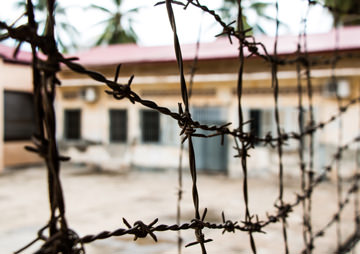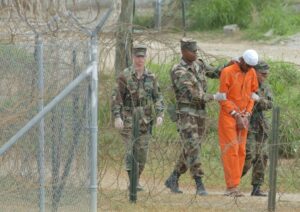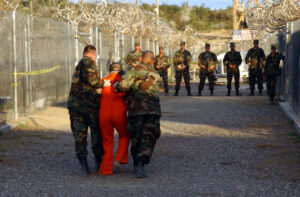Answering Evil With Evil
The "debate" over torture is almost as grotesque as torture itself. There can be no legitimate debate about the intentional infliction of pain upon captive and defenseless human beings. Shutterstock
Shutterstock
The “debate” over torture is almost as grotesque as torture itself. There can be no legitimate debate about the intentional infliction of pain upon captive and defenseless human beings. The torturers and their enablers may deny it, but they know — and knew from the beginning — that what they did was obscenely wrong.
We relied on legal advice, the torturers say. We were just following orders. We believed the ends justified the means. It is nauseating to hear such pathetic excuses from those who, in the name of the United States, sanctioned or committed acts that long have been recognized as war crimes.
According to the Senate Intelligence Committee report on the treatment of detainees after the 9/11 attacks, members of a CIA interrogation team were “profoundly affected … some to the point of tears and choking up” at the brutal treatment in 2002 of an important al-Qaeda detainee named Abu Zubaida.
Captured in Pakistan and whisked to a secret facility in Thailand, Zubaida was initially cooperative, willingly providing answers under normal, non-coercive questioning. But the CIA abruptly halted his interrogation, placed him in isolation for 47 days and then began a regime of astonishing and gratuitous cruelty.
Torturers slammed him against walls, confined him in coffin-size boxes for a total of nearly 300 hours and subjected him to 83 sessions of waterboarding, which simulates drowning — a practice for which Japanese war criminals were tried, convicted and harshly punished following World War II. After one waterboarding assault, according to the Senate report, Zubaida was “completely unresponsive, with bubbles rising through his open, full mouth.”
In all, 119 detainees were held in the CIA’s archipelago of secret prisons, according to the report; at least 26 of them were wrongfully detained and never should have been arrested in the first place.
The report says 39 prisoners were tortured with what the administration of George W. Bush and Dick Cheney called “enhanced interrogation techniques” — a chilling bit of Orwellian newspeak. They were kept awake for up to 180 hours, often standing, sometimes in “stress” positions designed to induce pain. Their arms were shackled above their heads. They were stripped naked and placed in ice baths. At least five prisoners were subjected to “rectal rehydration” or “rectal feeding.” While the CIA says only three detainees were waterboarded, Senate investigators found waterboarding equipment at a site where supposedly no such torture took place.
We know of two men who were tortured to death. One of them, Gul Rahman, was held at a facility in Afghanistan that the Senate report refers to as COBALT, described in a CIA memo as a “dungeon.” Rahman was put in a dank, frigid cell wearing only a shirt — no pants or underwear — and chained so that he had to sit or lie on a bare concrete floor. He was found dead the next morning, apparently of hypothermia. The other man, Manadel al-Jamadi, died in the notorious Abu Ghraib prison in Iraq after being beaten and shackled to a window.
The report seeks to demonstrate that the torture was useless because valuable information in the fight against al-Qaeda came from conventional interrogation methods, not the brutal treatment. Torture’s apologists — including Cheney, who says he’d “do it again in a minute” — claim otherwise. This dispute cannot be settled. No one can say that a name, date or phone number extracted by torture could never have been obtained by other means.
But efficacy is not the point. What matters is not whether torture produces more information or less. What matters is that torture is manifestly immoral — and clearly illegal under U.S. and international law.
The CIA says it relied on Bush administration legal opinions attesting that torture is not really torture. The Senate report shows, however, that the CIA was less than honest in its representations to the Department of Justice lawyers about what was being done to the detainees. Again, this argument misses the big picture: Those who ordered and committed torture would not be so eager to hide behind a paper-thin legalistic veneer if they truly believed what they did was right.
Why would the CIA officer in charge of the program destroy all videotapes of waterboarding sessions? Why would the agency fight the Senate investigators so fiercely, at one point hacking into the committee’s computers? Why would there be such a coordinated attempt by torture’s apologists to steer the “debate” toward subsidiary questions and away from the central issue?
There is only one answer: They decided to answer evil with evil, rather than justice. And they knew it was wrong.
Eugene Robinson’s e-mail address is eugenerobinson(at)washpost.com.
© 2014, Washington Post Writers Group
Your support matters…Independent journalism is under threat and overshadowed by heavily funded mainstream media.
You can help level the playing field. Become a member.
Your tax-deductible contribution keeps us digging beneath the headlines to give you thought-provoking, investigative reporting and analysis that unearths what's really happening- without compromise.
Give today to support our courageous, independent journalists.






You need to be a supporter to comment.
There are currently no responses to this article.
Be the first to respond.